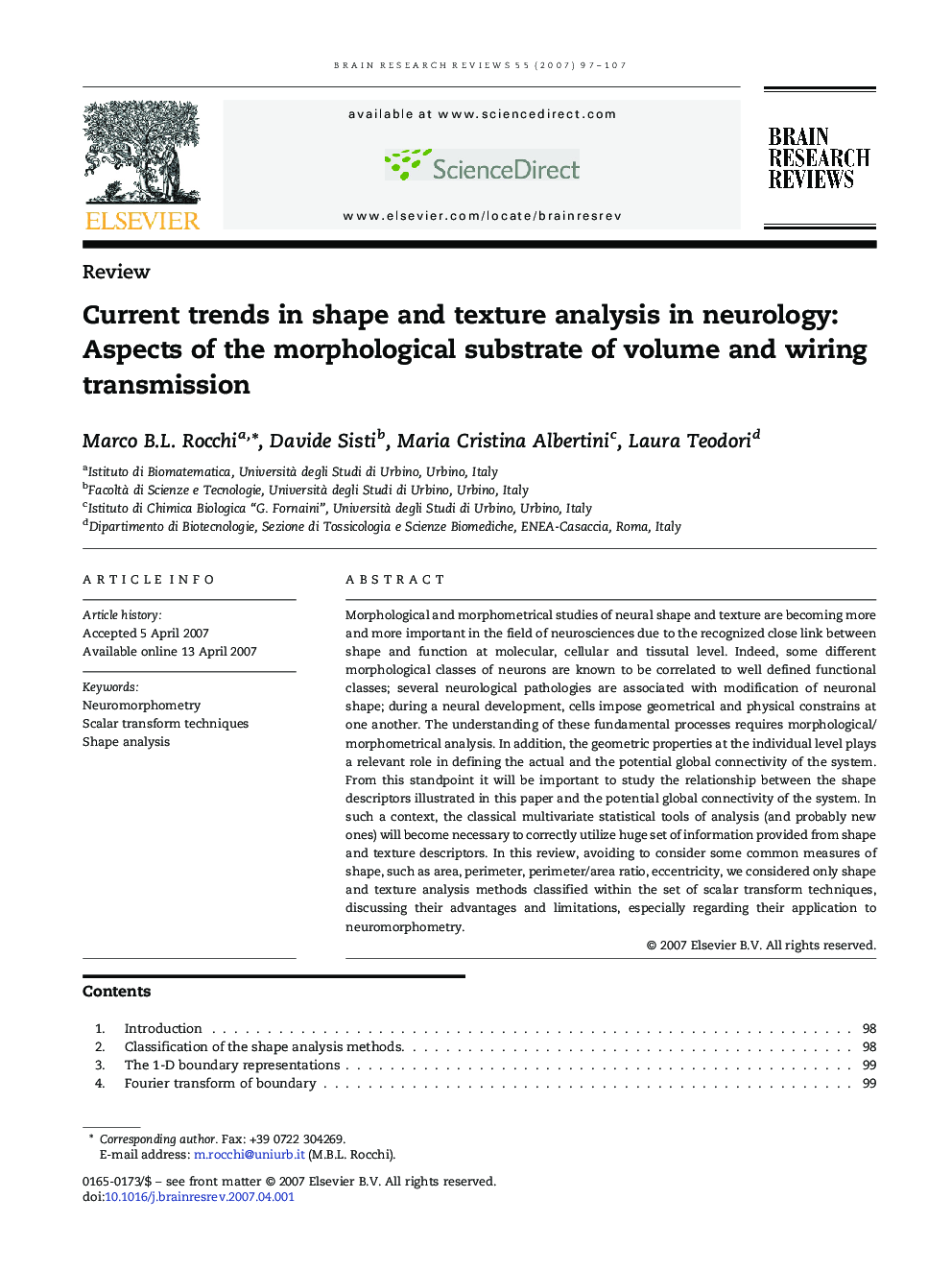| Article ID | Journal | Published Year | Pages | File Type |
|---|---|---|---|---|
| 4334066 | Brain Research Reviews | 2007 | 11 Pages |
Morphological and morphometrical studies of neural shape and texture are becoming more and more important in the field of neurosciences due to the recognized close link between shape and function at molecular, cellular and tissutal level. Indeed, some different morphological classes of neurons are known to be correlated to well defined functional classes; several neurological pathologies are associated with modification of neuronal shape; during a neural development, cells impose geometrical and physical constrains at one another. The understanding of these fundamental processes requires morphological/morphometrical analysis. In addition, the geometric properties at the individual level plays a relevant role in defining the actual and the potential global connectivity of the system. From this standpoint it will be important to study the relationship between the shape descriptors illustrated in this paper and the potential global connectivity of the system. In such a context, the classical multivariate statistical tools of analysis (and probably new ones) will become necessary to correctly utilize huge set of information provided from shape and texture descriptors. In this review, avoiding to consider some common measures of shape, such as area, perimeter, perimeter/area ratio, eccentricity, we considered only shape and texture analysis methods classified within the set of scalar transform techniques, discussing their advantages and limitations, especially regarding their application to neuromorphometry.
